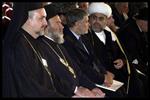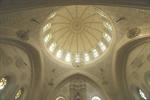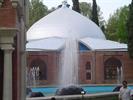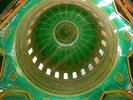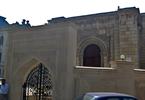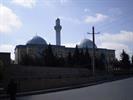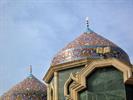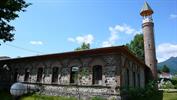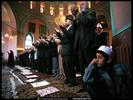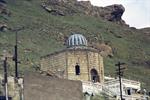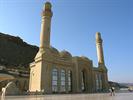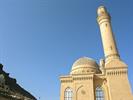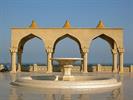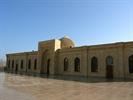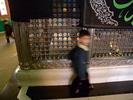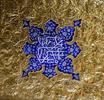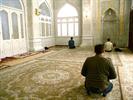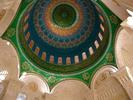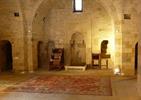The peculiarities of the historical development of Azerbaijan, its geographical position and the national composition of the population create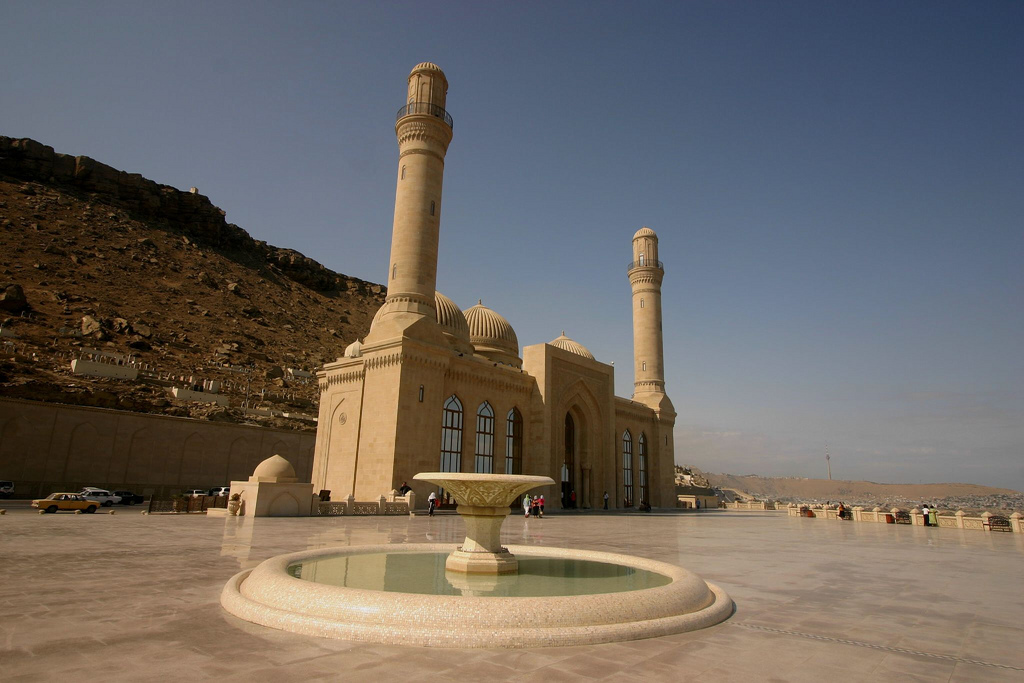 d favorable conditions for the spread of different religions in the country. Such religions as heathenism, Zoroastrism, Judaism, Christianity, Islam and others managed to spread over the country in different periods of time, interacted with one another and established the specific religious life in the country.
d favorable conditions for the spread of different religions in the country. Such religions as heathenism, Zoroastrism, Judaism, Christianity, Islam and others managed to spread over the country in different periods of time, interacted with one another and established the specific religious life in the country.
Islam was introduced in the area of present-day Azerbaijan during the seventh century, and Shi’ite Islam was established as the official religion of the Azerbaijani people in the 16th century. During the Soviet period, religious leaders were persecuted, mosques were closed or destroyed, and religious practice was officially condemned. Many of the people fell away from the traditional practices of their religion, including the veiling of women and prayers said throughout the day. Since independence, the religion is gaining support again. Nearly everyone in the country says they are Muslim. However, they do not practice the religion with the fervor of their Iranian counterparts. Most women do not wear the traditional clothing and the prayers are said more when convenient than on a strict regimen. About 70 percent of the Muslims practice Shi’ite Islam, and about 30 percent are Sunnis. Although that distinction would be important in most other predominantly Muslim cultures, it is not a crucial distinction in Azerbaijan. The groups live and work side by side.
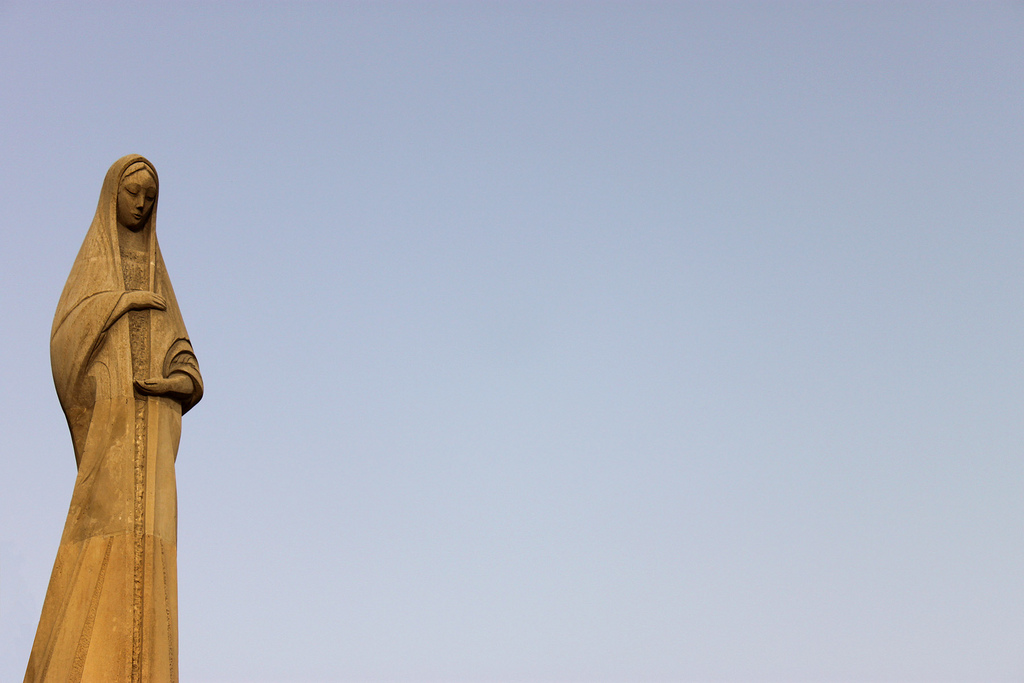 The nation is religiously very tolerant. Ethnic Azeris predominantly follow Shia Islam. Unlike the Sunni Islam of Turkey or south Asia, Shiism places great emphasis on Imam Ali, considering his descendents as honoured guardians of the message of the Prophet Mohammed. Although this is nominally the same form of Islam as practised in neighbouring Iran, you will see minimal religious fundamentalism in Azerbaijan. Indeed, in the antireligious Soviet days, the idea of being Muslim was more a blurred badge of Azeri nationality than a spiritual faith. Today the nation is effectively relearning Islam from scratch. The result is a fascinating blend of Islamic humanism and open-minded secularism, with elements of pre-Islamic animism and an added soupcon of Zoroastrianism.
The nation is religiously very tolerant. Ethnic Azeris predominantly follow Shia Islam. Unlike the Sunni Islam of Turkey or south Asia, Shiism places great emphasis on Imam Ali, considering his descendents as honoured guardians of the message of the Prophet Mohammed. Although this is nominally the same form of Islam as practised in neighbouring Iran, you will see minimal religious fundamentalism in Azerbaijan. Indeed, in the antireligious Soviet days, the idea of being Muslim was more a blurred badge of Azeri nationality than a spiritual faith. Today the nation is effectively relearning Islam from scratch. The result is a fascinating blend of Islamic humanism and open-minded secularism, with elements of pre-Islamic animism and an added soupcon of Zoroastrianism.
As Western-style capitalism seems to be failing to deliver a fairer society, religious adherence is slowly growing. However, relatively few women cover their hair and the Azeris who follow the orucduq (fast) during Ramazan (Ramadan) generally do so for the 'right reasons'(spiritual and physical purification) rather than through any perceived compunction. Less pious Azeris use Ramazan as an excuse to cut down on the vodkas rather than to actually stop eating during daylight hours. Restaurants stay open.
Azerbaijan's religious minorities include Sunni Muslims (mostly the ethnic Lezgins) and small groups of Russian Orthodox and Catholics. Official figures give around 2% as Armenian Apostolic, but these folk live in the occupied areas. There is a Georgian Orthodox community around Qax. Nic, near Qabala, is the last bastion of the Albanian-Udin church, whose political importance vastly outweighs the size of its tiny congregation. Krasnaya Sloboda near Quba is a unique mountain-Jewish village and there are small Jewish communities in Baku and Oguz.
According to a recent Gallup Poll Azerbaijan is one of the most irreligious countries in the Muslim world, with about 53% of respondents indicating the importance of religion in their life as little or none. The same poll indicates that only 20% of the respondents has attended on religious services.
Iran and Azerbaijan are the world's only dominantly Shiite Muslim countries (Iraq may soon follow'). Yet the two states could not be more different. Azerbaijan is every bit as religiously laissez-faire as Iran is single minded. As one local put it 'The Koran told us not to drink wine So let's drink vodka'. As the first Muslim country to be subjected to European colonialism (1813), Azerbaijan has a long history of making liberal interpretations of Islam. During the Soviet era, Islam became as much a badge of national identity as a religion. Following independence Azerbaijan did experience a few months of stricter Islam during which women became a little nervous to walk alone without scarves. This lasted barely a year and today some Baku beauties unselfconsciously expose bare midriffs and wear miniskirts that would turn heads in Rio de Janeiro.
Azeri Islam has a very strong undercurrent of animism reflected in numerous superstitions, holy places (pirs) and ceremonies with pre-Islamic and Zoroastrian influences. Zoroastrianism itself was influenced by Azerbaijan, the prophet Zarathustra is thought to have spent a long time in the Absheron peninsula whose gas flares may have given him the idea to incorporate fire ceremonies into the faith.
Christianity first arrived in Azerbaijan within a century of Christ's death, eg near Culfa in the Araz valley, Nakhchivan. By the 4th century, like Georgia and Armenia, Albania (as the region was then known) had been heavily Christianized. Unlike its neighbours, however, it adopted a Nestorian-Assyrian-style faith with a spiritual centre at Nic and monastic settlements throughout the north-west (6th-century remnants at Bideyiz, Orta Zeyzit, Lakit etc). Arab attacks in the 8th century began the long slow conversion to Islam. Contrary to stereotype, the Arabs didn't force Albanians to become Muslims, though a high tax on 'infidels' encouraged voluntary conversion. Nonetheless, with certain changes, the Albanian church survived up until 1836 when Russian authorities forced the creed to accept Armenian and Georgian priests. By this stage Islam was the overwhelmingly dominant religion amongst ethnic Azeris who had largely accepted the Shiite form following the example of Shah Ismail, the Azeri-Persian emperor, from 1501. Ganja, Nakhchivan and certain Absheron towns became leading Islamic centres and pilgrims travelled great distances to the Muslim shrines in Barda, Nardaran and Bibi Heybat.
During the Russian era, many Russian Orthodox Christians as well as strict Protestant sects such as the Molokans (who don't believe in building churches or using crosses) arrived in Azerbaijan as colonists and religious exiles respectively. There was also a great influx of Armenian Christians from the Ottoman Empire, notably into Karabagh. They simply felt safer under the Christian rule of Russia than in an Islamic empire showing increasing signs of religious intolerance. Armenians co-opted some of the disused old Albanian churches while building many of their own.
Today there are a number of deserted churches across the country, some deliberately desecrated. The desecrations were mostly the outpourings of frustrated anger by ethnic Azeri refugees driven out of Armenia or Armenian-occupied Azerbaijan during the 1988-93 conflict. Orthodox and German churches were not attacked, though lacking congregations many have been allowed to decay or been converted into cafes and sports halls.
Stalin's anti-religious crusade of the 1930s was particularly hard on Azerbaijan. Its most sacred Islamic shrine at Bibi Heybat was demolished for road widening and the splendid Alexander Nevsky Cathedral was replaced by a dumpy concrete school. Throughout the country fine mosques disappeared, most notably in Islamic strongholds such as the Absheron peninsula, though fortunately a few were preserved as cultural exhibits, museums of atheism or occasionally as state-licensed places of worship. Stalin was also hard on the small Jewish communities.
Today, Muslims, Christians and Jews worship freely. Before the Soviet takeover, the Muslim khans took a conscious policy of religious tolerance to both Christians and Jews. According to one of his living relatives, the great Fatali Khan of Quba advised his citizens 'Protect these people, and later you'll reap the fruit'. In the long term this paid off. The historical lack of discrimination against Jews is held to be one of the reasons why Israel and the US Jewish lobby were relatively supportive of Azerbaijan during the 1990s' crisis years. Emigration to Israel halved Azerbaijan's Jewish population between 1979 and 1993 (to 17,300), but curiously one all-Jewish village (Krasnaya Sloboda near Quba) still remains.
Since independence, new mosques have been built in many towns and old ones de-mothballed including the 100-year-old grand mosque at Shamakha, once claimed to be one of the world's three biggest. In 1998 Bibi Heybat shrine became the first Stalin-demolished mosque in the former Soviet Union to be fully rebuilt. The dramatic new religious constructions at Shuvalan and Nardaran reflect a мery curious Azeri spiritual revival. With a miniscule congregation of Catholics some wondered whether Pope John Paul had got on the wrong plane when he arrived in Baku in May 2002. But as well as blessing the first stone of Catholic church (built near the Baku Entertainment Centre on land donated by the Government), he delivered a powerful message - that 'people of Azerbaijan should be proud of the climate of tolerance in their country'. And indeed they are.
|
Important information on visa: If you're going to vizit Azerbaijan check the latest information of visa regime here >>>. Regularly updated data, helpful advice and expert guidance. If you have any questions, please do not hesitate to contact us. |





